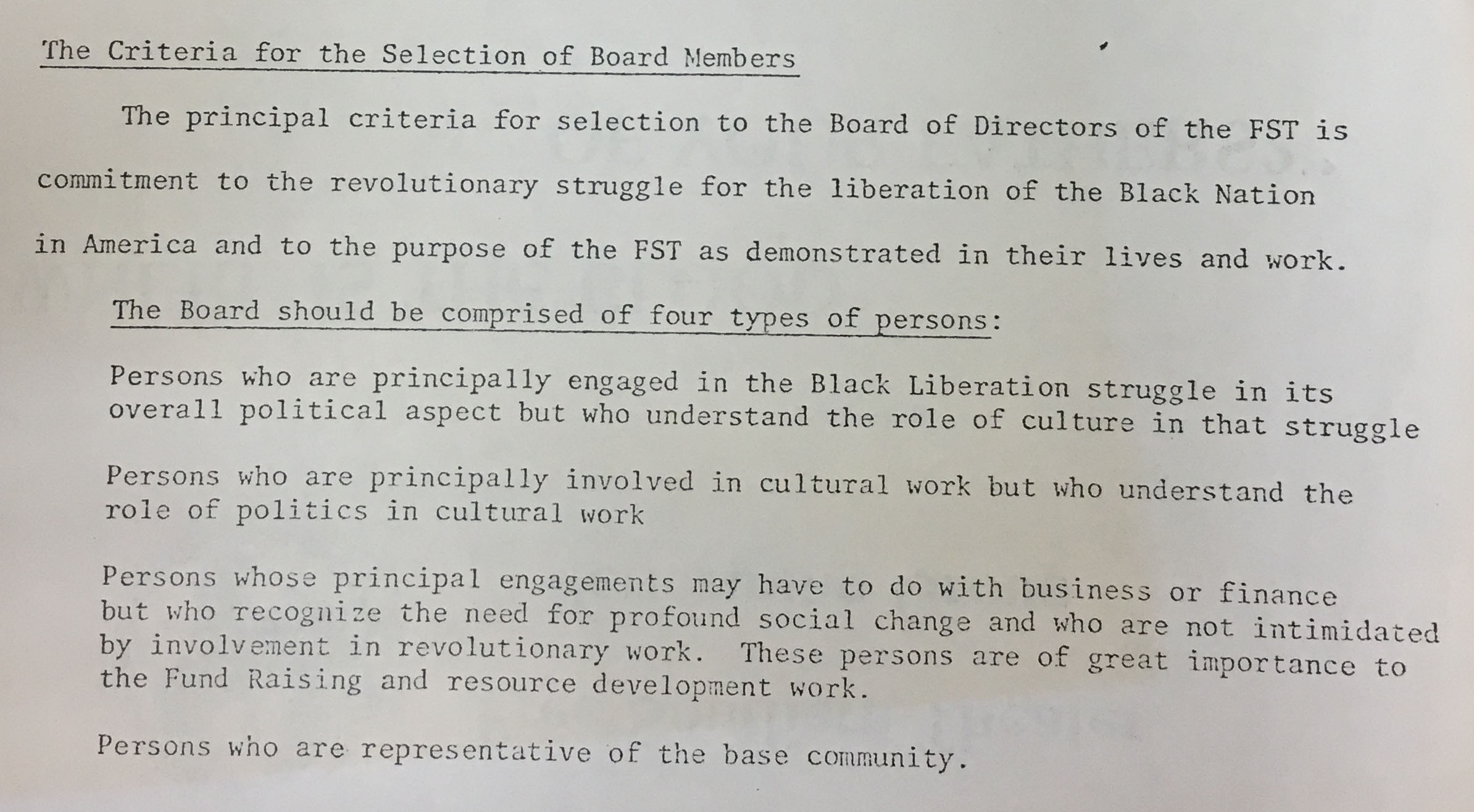The Establishment of a Free Southern Theater
Building Capacity: Process and Governance
In line with their training as community organizers, O’Neal, Moses, and Derby were quite throrough in the development of a company guided by local participation and a tiered governance structure based on agreed upon principles and obesrvations. With the Proposal and Prospectus in hand, Free Southern Theater proceeded to create clear guidance for scaling their organizing efforts with local and national voices in dialog to ensure best practices would be coupled with on the ground knowledge. Notable is that these early documents laid out the intention for local Free Southern Theaters across the South. While this vison never came to pass, it is an indication of the ways in which the civil rights organizing strategies of the Student Nonviolent Coordinating Committee were informing the organizing strategies for Free Southern Theater.
In a handwritten document circa 1963 titled Composition of the Company and the Responsibilities of Members, we see (excerpted below) that from the very beginning the organizing principle of local involvement was a key aspect of building the company. The Free Southern Theater notes in the section preceding this excerpt that, “...the cultural experience of Negroes in this society is and has been rich and intense...We feel that this wealth of experience can provide the substance for a unique and important kind of theater experience.”


Early company organizing notes written on the back of a half-page typed start to the General Prospectus. The focus of this early document was the reasoning behind deep local participation, types of skills needed in the company, and a timeline for an initial tour in Fall 1964.
In addition to community participation in the operations and performance of the theater, there was great intention among O’Neal, Moses, and Derby to clearly define how and why decision making would be a collective act guided by agreed upon principles. This is quite a divergence from more strictly defined artist leadership in traditional theater and other participatory art movements at the time and throughout the early 20th century. This type of structure maps well on to the organizing principles of the civil right movement however and shows this unique overlap between movement organizing and the use of creative practice as a tool for collective liberation. An early document titled Board Development and Interim Policy Making Group (circa Spring 1964) clearly outlined the function of their Board of Directors and guidance for an “interim policy making group” who would steer the creation of the initial Board of Directors.


Both of these sections of the Board Development and Interim Policy Making Group appear on page one and map out both practical and conceptual considerations for who would comprise the Free Southern Theater Board of Directors and how they would operate.
A document from circa Summer 1964 titled Facts About the Free Southern Theater reveals the development of the national/local board structure with the addition of language showing intentions for the development of numerous local Free Southern Theaters. It is also apparent that Free Southern Theater has been successful in recruiting a notable cadre of arts leaders to their National Board including names such as James Baldwin, Nat King Cole, and Gene Kelly.

Small excerpt from page 1 of Facts About the Free Southern Theater which appears to have been used as a specific fundraising ask to attend a ticketed benefit dance on October 21, 1964.
daniel@significantdevelopments.us — Jackson, Mississippi